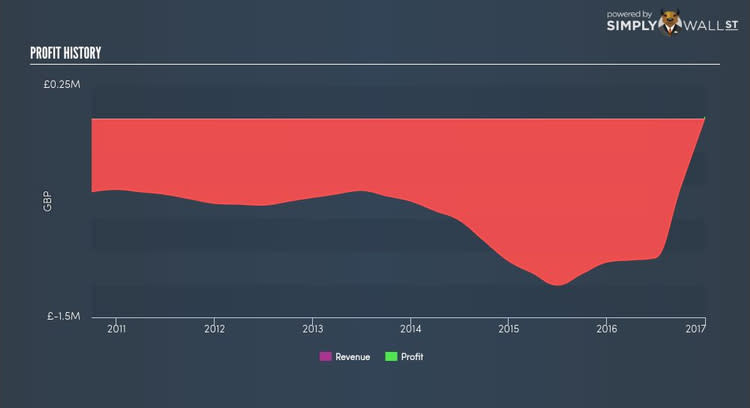Can Sareum Holdings plc (AIM:SAR) Improve Your Portfolio Returns?

For Sareum Holdings plc’s (AIM:SAR) shareholders, and also potential investors in the stock, understanding how the stock’s risk and return characteristics can impact your portfolio is important. There are two types of risks that affect the market value of a listed company such as SAR. The first risk to consider is company-specific, which can be diversified away when you invest in other companies in the same industry as SAR, because it is rare that an entire industry collapses at once. The second risk is market-wide, which arises from investing in the stock market. This risk reflects changes in economic and political factors that affects all stocks.
Not all stocks are expose to the same level of market risk. The most widely used metric to quantify a stock's market risk is beta, and the market as a whole represents a beta of one. A stock with a beta greater than one is expected to exhibit higher volatility resulting from market-wide shocks compared to one with a beta below one.
Check out our latest analysis for Sareum Holdings
What does SAR's beta value mean?
Sareum Holdings’s five-year beta of 1.02 means that the company’s value will swing up by more than the market during prosperous times, but also drop down by more in times of downturns. This level of volatility indicates bigger risk for investors who passively invest in the stock market index. According to this value of beta, SAR can help magnify your portfolio return, especially if it is predominantly made up of low-beta stocks. If the market is going up, a higher exposure to the upside from a high-beta stock can push up your portfolio return.
Does SAR's size and industry impact the expected beta?
A market capitalisation of GBP £23.15M puts SAR in the category of small-cap stocks, which tends to possess higher beta than larger companies. Conversely, the company operates in the pharmaceuticals, biotechnology and life sciences industry, which has been found to have low sensitivity to market-wide shocks. Therefore, investors can expect a high beta associated with the size of SAR, but a lower beta given the nature of the industry it operates in. It seems as though there is an inconsistency in risks from SAR’s size and industry. There may be a more fundamental driver which can explain this inconsistency, which we will examine below.
Can SAR's asset-composition point to a higher beta?
During times of economic downturn, low demand may cause companies to readjust production of their goods and services. It is more difficult for companies to lower their cost, if the majority of these costs are generated by fixed assets. Therefore, this is a type of risk which is associated with higher beta. I examine SAR’s ratio of fixed assets to total assets to see whether the company is highly exposed to the risk of this type of constraint. Given that fixed assets make up less than a third of the company’s total assets, SAR doesn’t rely heavily upon these expensive, inflexible assets to run its business during downturns. Thus, we can expect SAR to be more stable in the face of market movements, relative to its peers of similar size but with a higher portion of fixed assets on their books. This outcome contradicts SAR’s current beta value which indicates an above-average volatility.
What this means for you:
Are you a shareholder? You could benefit from higher returns during times of economic growth by holding onto SAR. Its low fixed cost also means that, in terms of operating leverage, it is relatively flexible during times of economic downturns. Consider the stock in terms of your other portfolio holdings, and whether it is worth investing more into SAR.
Are you a potential investor? I recommend that you look into SAR's fundamental factors such as its current valuation and financial health. Take into account your portfolio sensitivity to the market before you invest in the stock, as well as where we are in the current economic cycle. SAR may be a great investment during times of economic growth.
Beta is one aspect of your portfolio construction to consider when holding or entering into a stock. But it is certainly not the only factor. Take a look at our most recent infographic report on Sareum Holdings for a more in-depth analysis of the stock to help you make a well-informed investment decision. But if you are not interested in Sareum Holdings anymore, you can use our free platform to see my list of over 50 other stocks with a high growth potential.
To help readers see pass the short term volatility of the financial market, we aim to bring you a long-term focused research analysis purely driven by fundamental data. Note that our analysis does not factor in the latest price sensitive company announcements.
The author is an independent contributor and at the time of publication had no position in the stocks mentioned.

